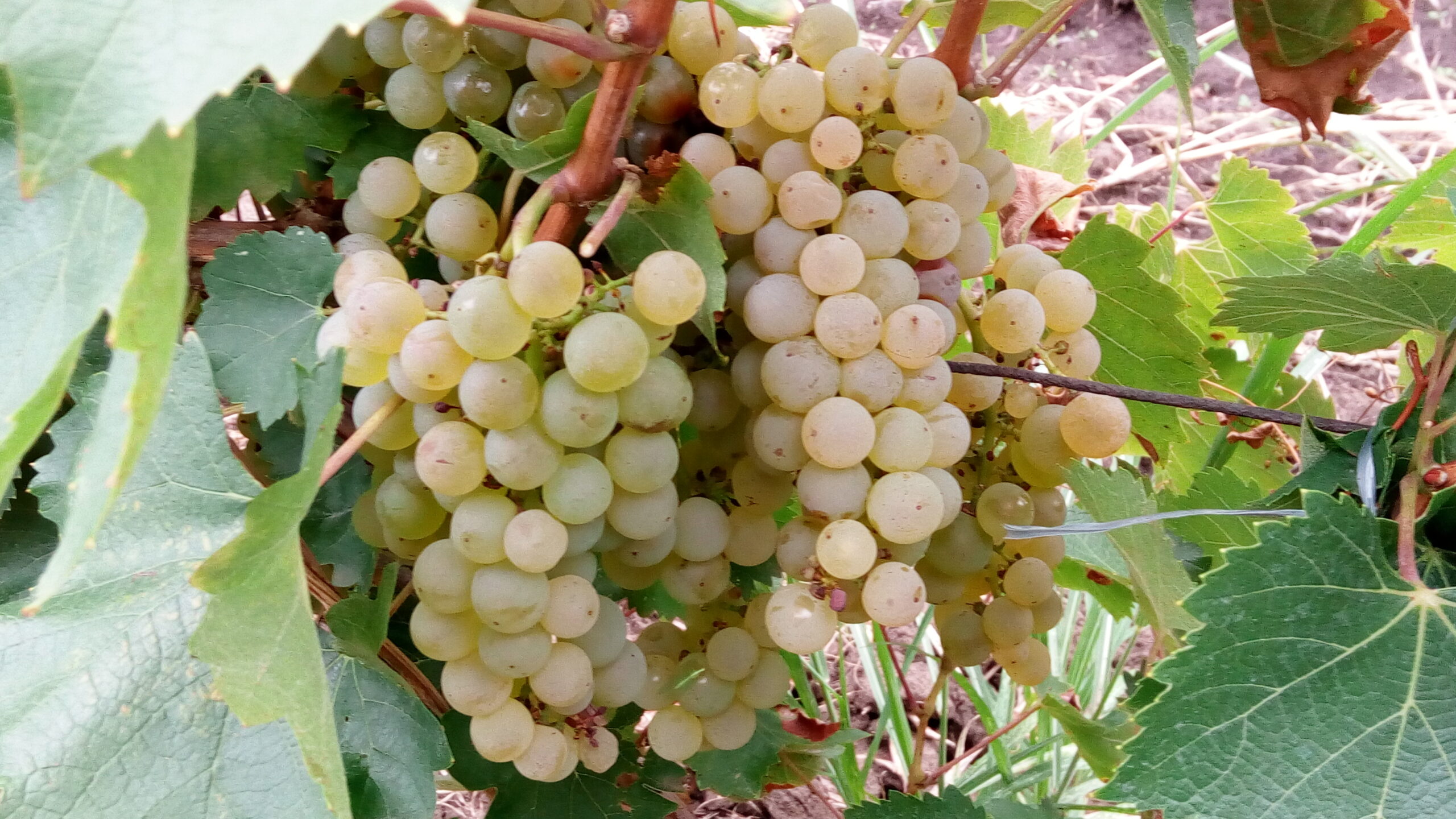In 21-st June we celebrate the Fetească regală Day. First of all, let’s get to know it better.
- Origin
There have been several hypotheses regarding the parents of this grapevine variety.
The winegrower Hening from Jidvei believed that it was a cross between Fetească albă and Dünnschälige (Frâncușă albă) found in the old Transylvanian vineyards. Fr. Müller from Aiud claimed that the Dănășană variety is a cross between Fetească albă and Honigler (Dulce mieros). Gh. Constantinescu considered the variety to be crossing between Fetească albă and Grasă de Cotnari.[1] I. Höfner, the successor of nurseryman Friedrich Caspari, was of the same opinion too.
Recent molecular analyzes have shown that the real parents of the variety are Fetească albă and Frâncușă.
- Historic
This variety, like many others, does not have a clear history. Athanasie Bulencea states that the Galbenă variety (if it were Fetească regală/ Dănășană) would have existed for centuries in Transylvania [2]. In addition to the fact that the statement is not documented, it is most likely referring to the Furmint variety, which, among others, also has Galbenă as its synonym.
Gaal Jenő stated in 1892 that Galbena de Ardeal (as the grapevine variety was known then) was one of the most widespread varieties in the Miniș-Măderat area [3], but it is very likely that it is also about Furmint which, indeed, was quite widespread in the area.
Following the research carried out, it is mentioned that Dănășană variety (Galbenă de Ardeal) appeared after the disaster caused by phylloxera (in Transylvania) [4], i.e. somewhere after 1880.
Initially, the grapevine variety was fixed in culture by A. Ligner, a preacher at the Lutheran church in Daneș. Later, he worked with A. Krafft, an amateur nurseryman from Mălâncrav, who had a tree and grapevine nursery in Daneș. The latter established in 1903 a plot with about 1,000 grapevines of this variety on a hill located in the south of Daneș, on the Boartăș river [5]. In a short time, the variety spread more and more in the area and came to the attention of nurseries after the presentation of the grapes at an exhibition organized in Mediaș [6].
The nursery winegrower Friedrich Caspari sensed the variety’s potential, took it over, breed and spread it in the region under the name Dünnesdörfer Königsast, then under the name Königsast weiss (Fetească regală) as it appears in a 1917 catalog [7].
In 1912 it appears for the first time in specialized literature under the name of Galbenă de Ardeal, Dănășană [8]. Friedrich Caspari presented himself at an exhibition in Bucharest in 1925 [9] with a wine from the Dünnesdörfer Königsast variety that he called Fetească regală. That was the first time when this grapevine variety gave its name to a wine.
Also in 1925 I.C. Teodorescu established, at the ”Nicolae Bălcescu Agronomic Institute” in Bucharest, the first ampelographic collection in the country, where the variety appeared under the name Galbenă de Ardeal [10]. In the ampelographic work from 1957, Galbena de Ardeal appears with the synonyms Fetească regală and Fetească de Daneș [11].
This grapevine variety should not be confused with the varieties Königsast (ie Kölner weiss), Lampăr or Strugurii Crăiești.
- Name
3.1 Etymology
The linguistic analysis carried out by specialists shows that the name Fetească comes from the village of Fetești, Scobinți commune, Iaşi county, with extensive vineyards mentioned since the the twelfth century. Thus, on July 9, 1631, voivode Moise Movilă sells and at the same time strengthens the rule of Eustace, the 3-rd logofat over the village of Fetești, the Hîrlău’s territory under Dealul lui Vodă between Cotnari and Hîrlău. In addition to the village, he also sells 7 vines in Dealul lui Vodă…
In the opinion of the linguist Ion Nuță, the Fetești name comes from Fătu/ Fetea, not from ”fetei”(girl’s, en.) + the suffix ”-esc” as the Romanian language dictionaries consider.
3.2 Synonyms
Dăneșană, Daneșană, Danesdoerfer Königsast, Danosi, Danosi Leanyka, Galbenă de Ardeal. OIV Liste cepage 2013, mentioned as admited synonyms in Romania: Kyralyleanka, Koningsast, Konigliche Madchentraube, Galbenă de Ardeal, Dănăşană.
3.3 Translations
Fetyasca korolevskaia, Königliche Maedchentraube, but we recommend to use as it is in our language (Fetească regală), not translated.
- Description
4.1 Botanical characters
 The grape bunches are medium-sized, 10-16 cm long, cylindrical or cylindrical-conical, often winged, with dense, non-homogeneous berries. The bunch weight is 190-250 g. The berry is spherical, medium-sized, with a diameter of 14 mm, colored in yellow-greeny. The juice is subtly flavored. The berry skin is thick, slightly frosted.
The grape bunches are medium-sized, 10-16 cm long, cylindrical or cylindrical-conical, often winged, with dense, non-homogeneous berries. The bunch weight is 190-250 g. The berry is spherical, medium-sized, with a diameter of 14 mm, colored in yellow-greeny. The juice is subtly flavored. The berry skin is thick, slightly frosted.
4.2 Technological characteristics
Average productivity differs from area to area. In the Blaj area, an average production of 110 q/ha is obtained and it can reach 270 q/ha in the Odobești area. Sugars: on average, over 200 g/l and can reach 235 g/l, when overriped. The total acidity of the grape must: between 5.7-6.2 g/ liter in tartaric acid.
4.3 Agrobiological characteristics
Disease resistance: medium to downy mildew and powdery mildew and weak to gray rot. Weather resistance: high to frost, weak to frost and drought.
- Biotypes, clones
- Biotype 1 – has longer bunches, with rarer yellow berries;
- Biotype 2 – has winged clusters, with dense greenish-yellow berries;
- Biotype 3 – with a discreet and finely aromatic (incense) taste that imprints a particularly pleasant aroma on new wines right from the beggining.
Homologated clones in Romania: Fetească regală 21 Blaj (1978), Fetească regală 72 Ștefănești (2008), Fetească regală 1 Iași (2012).
- Romania
6.1. Cultivated areas
In 1958, the area occupied with this grapevine variety was approximately 400 ha.
The total area with Fetească regală in February 1, 2022 was 12,215.93 ha, representing 6.64% of Romania’s wine-growing area, in slightly decrease compared to previous years.
The first 10 counties by cultivated area are: Vrancea 5,082.36 ha; Alba 1,445.54 ha; Valcea 744.57 ha; Galați 716.91 ha; Prahova 702.56 ha; Vaslui 432.65 ha; Arad 371.07 ha; Iasi 349.14 ha; Timiș 296.26 ha; Argeș 287.07 ha.
6.2. Producers
Cramele Jidvei (739,30 ha), Cramele Recaș (165,86 ha), Domeniile Ostrov (53,84 ha), SCDVV Bujoru (45,82 ha), Domeniile Tohani (30,48 ha), SCDVV Blaj (30 ha), Domeniile Panciu (29,69 ha), Crama Averești (28 ha), Crama de Sub Tei (25 ha), Domeniile Băniei (25 ha).
- In the world
The grapevine variety Fetească regală is also cultivated in Moldova, Ukraine, Hungary, Slovakia, Czech Republic, Austria and Germany.
Bibliography
[1] CONSTANTINESCU Gherasim, Ampelografia, Editura Agrosilvică de Stat, București, 1958, p. 332
[2] Athanasie Bulencea, Viile și vinurile Transilvaniei, Editura Ceres, București, 1975, p. 50
[3] Alexandru Mihalca, Emil Lazea, Tradițiile și experiența culturii viței de vie în zona Aradului, Editura Ceres, București, 1998, p. 105
[4] M. Toader, O. Bellu, B. Baltagi, Gh. Iliescu și C. Matran, Soiul de viță Dănășoara (Galbenă de Ardeal), Studii și cercetări de biologie, Seria Biologie vegetală, Tomul 10, vol. 4. 1958, p. 371-380 Comunicare prezentată de Gh. Constantinescu, membru corespondent al Academiei R.P.R., în ședința din 27 mai 1858
[5] The vineyard still existed in 1958, when the research mentioned in the study was carried out. In 2018 when I did the documentation in the area with Mr. Bădica Nicola, inspector at Daneș City Hall, the vineyard no longer existed
[6] I have not been able to identify the Exhibit referred to
[7] The authors of the study probably had access to this source. Until now I have not identified this Catalog
[8] GRAUR D. Daniil, Cultura viei, manuarea vinului, morburile şi vindecarea lor, Şimleul Silvanei, 1912
[9] I have conducted a lengthy search to find something more about the mentioned Exhibition, but have not been able to identify it.
[10] I. C. Teodorescu, Gh. Constantinescu, E. Negreanu, V. Doucet, Studiul analitic al strugurilor din colecția Facultății de agronomie, București, Analele Facultății de agronomie, 1941-1942, vol. 2
[11] CONSTANTINESCU Gherasim, NEGREANU Elena, Studiul însușirilor tehnologice ale soiurilor de viță roditoare (Vitis vinifera sativa), Edit. Acad. R.P.R., București, 1957, p. 307
[12] A. M. Negrul, Vonogradarstvo, Selhozghiz, Moscova, 1956
Documented and writen by Tiberiu ONUȚU
Translated and adapted by Mirela HEIZER
Copyright, 2022
